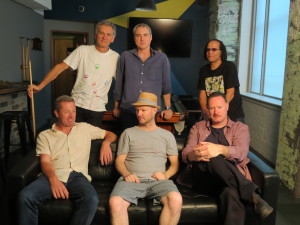
Rick Robertson – Saxophones
Phil Slater – Trumpet
Matt McMahon – Piano, Organ, Rhodes Piano
Alexander Hewetson – Bass, Acoustic Bass
Simon Barker – Drums and Log Drums
Aykho Akhrif – Percussion
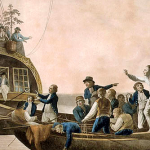
1. The Mutiny: Fletcher Christian and his followers take control of the Bounty, put Captain Bligh in a long boat and set him adrift. Matt McMahons Rhodes piano eerily introduces this piece with Alex Hewetson’s acoustic bass providing the anchor and eventually the infectious groove.
2. Return to Tahiti: The Bounty with the Mutineers in charge firstly head to Tubuai where they spend 3 months in bloody conflict with the natives before heading back to Tahiti. Simon Barker’s log drums bring a Polynesian presence to the proceedings joined in the last movement by a traditional Scottish Reel or hornpipe typical of the melodies danced to by the sailors on board the Bounty.
3. Search for Sanctuary: Immediately after arriving in Tahiti, the Bounty’s crew of nine is joined by eleven Tahitian women, and six Tahitian men. They spend the next 12 months criss-crossing the pacific looking for a place to hide. The theme in this piece, played by Soprano Saxophone and Trumpet is inspired by a traditional Polynesian nose flute melody.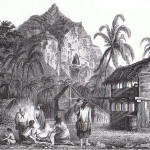
4. Come Ye Blessed: On the 15th January 1789 the Bounty arrives at Pitcairn Island. Wrongly charted by the Royal Navy, Pitcairn was the perfect hiding place for the Mutineers and their Polynesian friends. This piece is a traditional Pitcairn Hymn which is sung at community gatherings on Norfolk Island. It is arranged in three movements:
1. Then Shall the King
2.I Was Hungered
3. In As Much
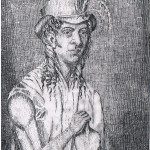
5. Gut Evrthing Yu Want Deya: With fertile soil and fresh water Pitcairn proved to be the perfect hiding place and the community flourished. Clothing and food were prepared largely in the traditional Polynesian way with the Englishmen providing a means of making alcohol which probably helped lead to their demise. This piece was composed around language samples from a 1956 recording made on Norfolk Island with log drums adding the Polynesian flavour. The horn melody is derived from a traditional Irish jig called “The Three Sea Captains”. Matt McMahons solo acoustic piano improvisations brings the chapter to a close.
6. Hue Hue: After 10 years on Pitcairn only 1 adult male remained alive. The rest were either murdered or came to a dubious end. John Adams, in an alcohol induced coma saw a vision from God and became a religious man, leading the community into piousness. He taught them to sing the melodies from hymns and used the text form the Bounty’s Bible, the only book on the island. This piece is composed around Norfolk language samples and includes a reggae feel, which relates to the mutineer Ned Young who was West Indian by birth, a teacher and a favourite of the women. He died of an Asthmatic condition.
7. Mauatua: Born in Tahiti, Mauatua (also known as Miamiti, Mai’mas or Isabella) married Fletcher Christian in Tahiti prior to the Mutiny. She then joined Christian on the journey to Pitcairn. They had three children, Thursday October, Charles and Mary. Following Christian’s death in 1793, Miamiti partnered with another of the mutineers, Ned Young and had another three children. Edward, Polly and Dorothea. She was a strong noble and capable woman who was instrumental in setting up the new society on Pitcairn. This is a drum piece written by Simon Barker.
8. Gethsemane: A peaceful existence continued on the island for many years with the occasional visit from a passing whaler or British navy vessel. A few visitors to the Island became residents and added their knowledge and genes to the unique culture. This piece is a Hymn written on Pitcairn by Driver Christian and George Hunn Nobbs. Solo Soprano Saxophone carries the melody through the first time in the traditional way with the rest of the band entering in four part harmony.
9. Daun I Goa: Composed around language samples, this piece also reflects the peaceful existence of the pious community.
10. Dem Da Mus Gwen It Et: As Pitcairn’s residents reached nearly two hundred the isolation and reliance on natural resources became a problem due to a few years of bad weather and drought. A short experiment to try and resettle in Tahiti proved to be a disaster with many Pitcairners succumbing to fatal illnesses. Returning to Pitcairn didn’t solve the problem and a few years later Queen Victoria offered Norfolk Island as their new home. Norfolk language samples provide the melody for this piece. Simon and Aykho on drums and percussion provide the tribal element with Matt’s piano mirroring the vocal melody. The horns kick in with the melody before Phil Slater enjoys some space to improvise on Trumpet.
11. Ship of Fame: On the 3rd of May 1856 HMS Morayshire sailed from Pitcairn to Norfolk Island. Onboard was the entire community. It was a sad time for all and the unknown awaited them. During the journey of over 3600 miles, the entire group of 194 would meet three times a day to sing Hymns and pray. This hymn was a favourite. Matt McMahon’s solo piano opens the piece with the band led by Rick’s Tenor Saxophone joining him for the final two choruses.
12. Kingston: The Pitcairners arrived at Kingston, Norfolk Island on June 6 1856.
Kingston was the site of the notoriously barbaric prison settlement that had only recently been evacuated. It is not surprising that two years later a group of 16 returned to Pitcairn however the large majority thrived in their new island home. This piece opens with Simon Barkers Military Drum salute to the previous inhabitants. “Kingston” finishes on a positive note heralding a new beginning for the gentle Island folk.
Recorded by Ross Ahern at Sony Studios in Sydney and mixed at The Temple of Sound.
Funded by the Australian Council for the Arts

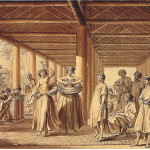
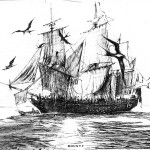
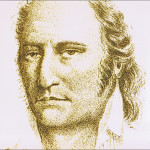

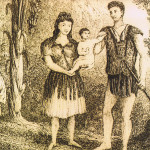
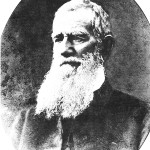
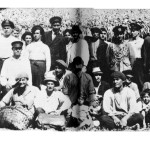
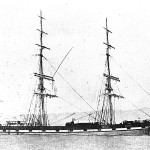
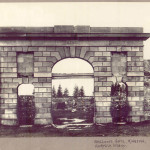
This is a fantastic work! Beautifully crafted music, outstanding playing, and a very moving story to go with it. An inspirational meeting of history, culture and sound.